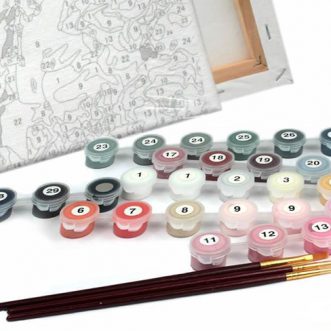December 10, 2018
I recently flew back from Sweden. At Gothenburg airport, I got my luggage label and boarding pass from the self-service machine, and waited in front of the designated check-in stations to drop my luggage. There were 4 stations, so 4 queues formed.
After about 30 minutes 3 airline staff members appeared. One sat at one check-in and proceeded to handle a customer. Another opened 2 other check-ins and hovered nearby. The third hovered at the front of the queues.
After another minute or so, while we hesitated, waiting for something to happen, the person managing the queues signalled the passenger at the front of my queue over to the open check-ins, and the passenger at the front of another queue over to the one next door. The next passenger in my queue was sent back to the self-check-in machines behind us to start again, because he didn’t have a boarding pass and luggage label.
It wasn’t clear what was happening at the stations, but when it was my turn I realised I had to take the scanner, scan my luggage label and put my suitcase on the belt. If it was within the weight restriction it would be accepted, otherwise not. I didn’t get to scan my label, because the staff member took the scanner off me and did it herself, as I was going too slowly.
The whole thing raised some questions for me.
If there was effectively only one queue, why have more than one lane?
If the idea was to do it ourselves, why did we have to wait before we could start?
If you want me to learn how to do it myself, why do it for me?
Most of all, what was the point of this arrangement – who was supposed to benefit?
The airline was still employing 3 people. It wasn’t quicker or easier for passengers.
In fact, the only outcome I could see was that everyone was left feeling slightly bemused and a little grumpier than they were before – the passengers because they’d been queue-jumped and made to feel stupid; the airline staff because they were being asked to manage a process that made things worse.
So, what was the point?
It would have been much better to have the 3 staff members running 3 stations, with the fourth open as a self-service. Frequent flyers who know the drill, or people who are happy to have a go at doing it themselves could have used the self-service station, everyone else would have got the benefit of the staff members’ familiarity with the procedure and the equipment, with the added bonus of some positive human interaction.
I suspect that this clumsiness came about in response to an earlier attempt to go completely do-it-yourself, which had failed miserably because the system couldn’t handle exceptions (what happens when someone’s luggage is rejected and there’s nobody there to see?), or took a lot longer (because most passengers just don’t do this every day).
Or maybe it was simply that in order to justify charging for normal service, they had to create an alternative that was not just self-service, but anti-service?
Instead of re-thinking the process, the airline was simply trying to force the new one to stick, dissatisfying everyone along the way.
I see the same thing happening all the time in banks, shops and supermarkets – some lucky staff member now has the job of ‘managing’ a process that effectively tells a customer:
“Don’t expect any service, don’t try and talk to us, don’t try and ask a question, don’t be old, or naive, or need help. We just want your money, and we don’t care if takes you twice as long to do what you came in for, as long as we still get it. Let’s face it, you don’t really have a choice do you?”
There is just one question to ask if you’re thinking about introducing DIY into your business.
Who is it really for?
Customers aren’t stupid. They can tell when it isn’t done for them. That means they’ll be open to an alternative when it comes.
They might even make their own.









